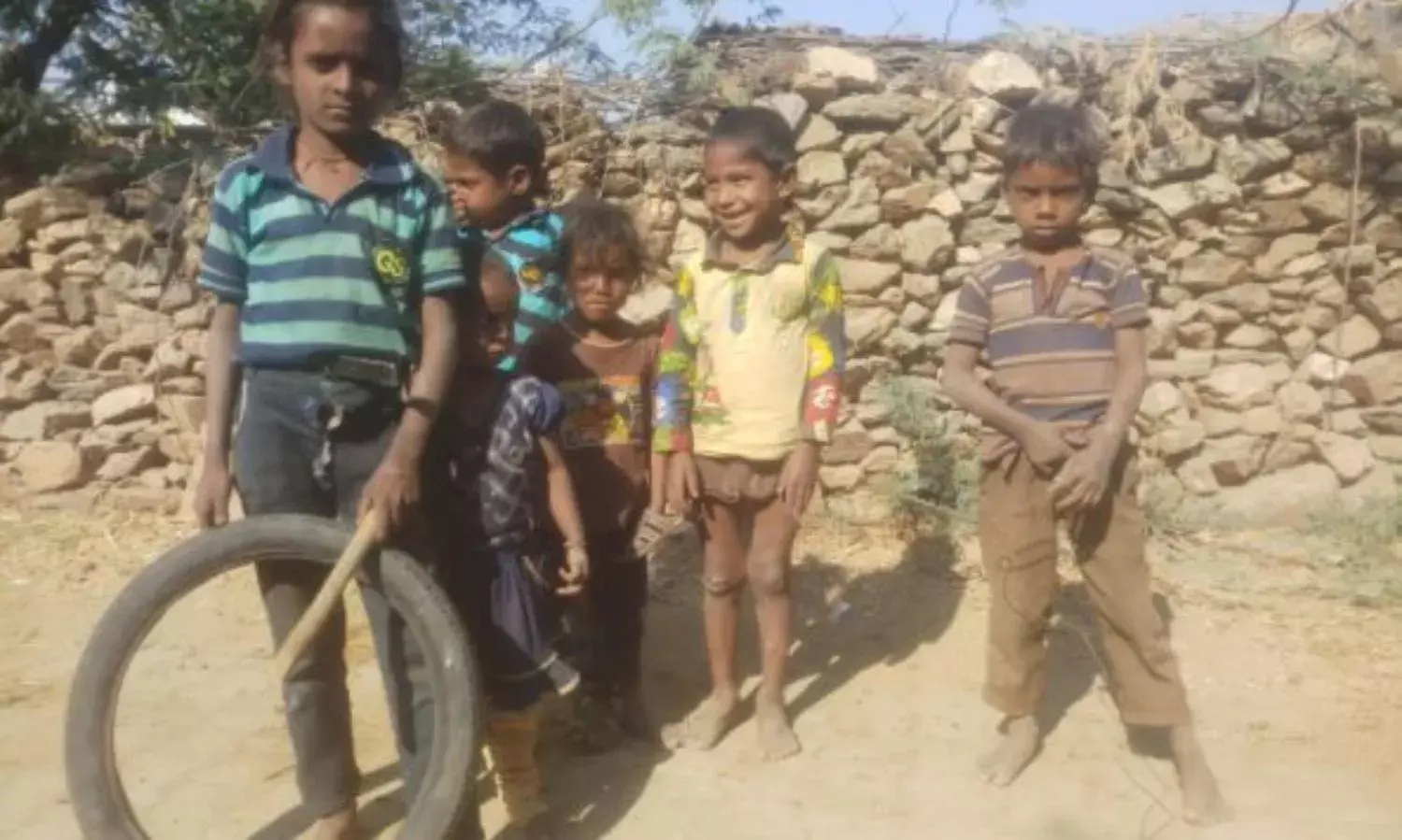Online Education at a Primary School in Bhilwara
‘Nearly 50% of our students do not have a proper smartphone’

The Government Primary School in Bambola doesn’t have any computer for its office use. Nonetheless its teachers have been trying to educate their students through the internet, as part of a Rajasthan government program called Social Media Interface for Learning Engagement – or SMILE.
A small village of some 60 households located in Bhilwara district, some 250km from Jaipur, Bambola has seen hardly any cases of COVID19, yet its sole primary school remains closed since New Delhi imposed a lockdown last March.
SMILE involves joining a WhatsApp group, in which videos prepared or selected by the department of education are shared with teachers along with study materials. Teachers forward these links to their students’ parents’ phones, and are expected to call them to check that they have been watching.
“Nearly 50% of our students do not have a proper smartphone,” says Pooranmal Salvi, 49, who has been a teacher here since 2001. A native of nearby Bateri, he teaches Hindi and environmental studies, but for nearly 15 years he was the only teacher at GPSB, teaching all the subjects and grades.
Many of those who do have a smartphone are not digitally literate, strongly undermining the government’s tall claims for online education.
Located right outside the village, the GPSB has a total of 67 students enrolled across Classes 1-5. They come from Bambola and Gynagarh, another village nearby.
“Definitely we are not able to check the progress of students effectively through this mode of learning as compared to face-to-face teaching,” says Monica Bijarnia, 26, who teaches English and maths.
Meanwhile the carefree kids who study here are making the most of what feels like an extended holiday. Some of them accompany their parents to the fields, while a few help out by taking the sheep for grazing.
Compared with kids at schools in Delhi and Bombay, they have missed out on quite a bit of their education this year.
The premises themselves show how under resourced are most public schools in rural India. A small room serves as the kitchen for preparing midday meals. A neem tree provides ample shade in the grassy school grounds, which also house some ber trees. A handpump provides water to the entire school, which to this day does not have running water in its kitchen or single toilet.
Two classrooms are used to teach students of all five grades, while another tiny room serves as the office space. The classroom walls are covered with alphabets and numbers. Images of of B.R Ambedkar and the Hindu goddess Saraswati sit side by side.
“We make students of grades 1-3 sit in two sides of the bigger room while grades 4 and 5 are taught in the other room,” explains Monica Bijarnia. The bigger room has two blackboards on opposite walls, and the students are made to sit so they can be taught from different boards.
“But since these are small children, they are prone to getting distracted,” says Bijarnia with a rueful smile. A native of Jhunjhunu, she joined the school in 2016. It took her a while to get used to the surroundings before she could finally feel at home here. She was the second teacher to join.
At present another teacher, Hema Kawar Rathore, is also teaching here on deputation. She lives in Shivpur a couple of kilometres away.
The GPSB has stood nearly empty for a while, awaiting its students. They are being deprived of an education because government policy for handling the pandemic is strongly shaped by the experiences of metro cities like Jaipur, Delhi or Mumbai, where the spread of COVID19 is indeed alarming.
Not so in rural areas like the remote village of Bambola. Our representatives must wake to the fact that the pandemic must be managed according to the prevailing local conditions. More so when the fundamental right to education of young children is at stake.
Given his long attachment to the school, Pooranmal Salvi shows with pride how they have used even the window grilles as tools for imparting education. These too have alphabets and numbers engraved on them. “We thought this may help the students absorb more, even when they try to look out the window!”



